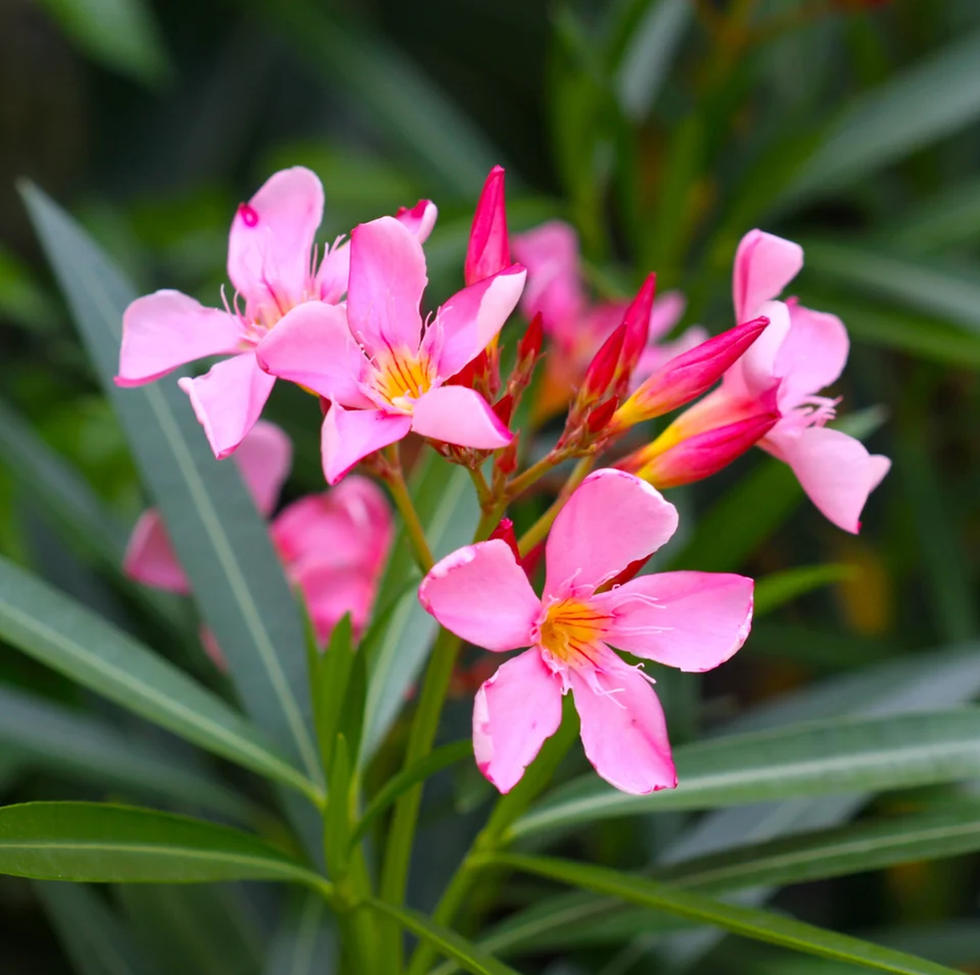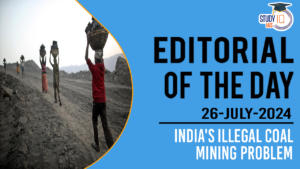Table of Contents
Lessons From India-EFTA
Context
- India’s FTA negotiations with the UK and EU are on hold due to elections.
- However, a significant agreement was finalised with the European Free Trade Association (EFTA), which includes Iceland, Liechtenstein, Norway, and Switzerland.
Investment Chapter in the FTA
- Distinctive Investment Chapter: Unlike other recent Indian FTAs that lack comprehensive investment chapters, the India-EFTA FTA contains detailed provisions focused on investment facilitation rather than protection.
- Commitments on Investment and Employment: The FTA features unique obligations wherein EFTA countries aim to direct $100 billion in FDI to India over 15 years and create one million jobs. These goals are framed as obligations of conduct, meaning the countries are expected to make sincere efforts without guaranteed outcomes.
| Fact |
| Article 7.1(3)(b) of the investment chapter provides that the EFTA states shall “aim to” facilitate the generation of one million jobs in India. |
Trade and Investment Framework
- Economic Logic of Integrating Trade and Investment: Historically, India’s FTAs, such as those with Japan and Korea, integrated trade and investment, based on the economic rationale that trade and investment are interconnected, especially in a globally integrated production landscape.
- Shift from Previous Models: In contrast to its early FTAs, India’s recent agreements, like those with Australia and the UAE, typically separate trade and investment rules, with distinct agreements covering each area.
Strategic Implications of the India-EFTA FTA
- Potential Shift in Policy: The inclusion of an investment chapter within the trade agreement with EFTA might indicate a possible reversion to the older FTA model, integrating trade and investment. However, it remains to be seen if this will influence future agreements.
Recommendations for India’s FTA Policy
- Unified Economic Treaties: India should negotiate trade and investment together in a single, comprehensive economic treaty to leverage concessions effectively.
- Enhanced Investment Protections: Expanding the scope to include not only investment facilitation but also protection, complete with a robust dispute resolution mechanism, could enhance foreign investor confidence, essential for attracting more FDI.
Key Features of the India-EFTA TEPA
Investment
- Investment Targets: TEPA aims for a $100 billion investment from EFTA countries into India, creating one million jobs over 15 years.
- It includes provisions for India to retract tariff concessions if these investment targets are not met.
- Conditions for Investment: The investment and job creation goals hinge on India maintaining a 9.5% growth rate and EFTA investments yielding over 16% annually.
- If unmet, both parties may adjust their expectations, and India can withdraw concessions after 18 years.
Trade in Goods
- Tariff Elimination: India agrees to abolish tariffs on a wide array of products within 7 to 10 years, facilitating greater access to the Indian market for EFTA exporters.
- EFTA Export Benefits: Products benefiting from tariff reductions include seafood (tuna and salmon), fruits (olives and avocados), coffee capsules, oils (cod liver and olive oil), sweets and processed foods (chocolate and biscuits), as well as smartphones, bicycle parts, medical equipment, clocks and watches, medicines, dyes, textiles, apparel, iron and steel products, and most machinery.
- Specific Concessions: Tariffs on cut and polished diamonds will be reduced from 5% to 2.5% within five years. Tariff reductions for wines are structured as follows:
- for wines priced between $5 and less than $15,
- tariffs will be cut from 150% to 100% in the first year,
- eventually decreasing to 50% over ten years.
- For wines priced $15 or more, tariffs will initially be reduced from 150% to 75%, then to 25% after ten years.
- Exclusions: Gold (representing 80% of EFTA’s merchandise imports to India), dairy, soya, coal, and certain agricultural products are not included in India’s tariff concessions.
- Impact on India’s Exports: There will be minimal effect on India’s exports to EFTA due to already low or non-existent tariffs under the Most Favoured Nation (MFN) status.
- Specifically, 98% of India’s $1.3 billion merchandise exports to Switzerland, which are primarily industrial products, already benefit from zero tariffs.
- The remaining 2% of exports, mainly agricultural products, are unlikely to see significant gains because of their low trade values.
Trade in Services
- Liberalisation Commitments: India and EFTA commit to service sector liberalisation, including specific provisions for Indian yoga instructors, traditional medicine practitioners, and highly skilled professionals.
- Qualification Recognition: TEPA includes mechanisms for recognizing professional qualifications, easing service delivery across borders.
- Juridical Persons: Benefits extend to any corporate entity incorporated in EFTA, operating in any WTO member country, aiming to prevent free-riding while ensuring substantial business activities within EFTA.
Sustainable Development
- Trade and Sustainable Development Chapter: This chapter commits to environmental and labour standards, marking a first for India in FTAs. It references multilateral agreements, balancing rights and obligations without subjecting them to dispute resolution.
- For example, the UN Framework Convention on Climate Change and the Paris Agreement recognise differential obligations for developed and developing countries.
Intellectual Property Rights
Enhanced Protections: TEPA aligns with pharmaceutical and high-tech industries’ interests from EFTA countries, requiring expedited handling of patent oppositions and extended periodicity for filing patent working statements.
Overall Impact
Uncharted Territory: TEPA’s broad and ambitious scope, from investment to IP rights, sets a precedent for India’s FTAs. Its long-term impact will depend on its implementation and adaptation to evolving trade dynamics.
Oleander Flowers
Context: Two Kerala government-controlled temple boards have banned use of oleander flowers (locally known as arali) in temple offerings after a 24-year old woman died after accidentally chewing some oleander leaves.
About Oleander Flowers
- Scientific Name: Nerium oleander
- Common Names: Known as oleander or rosebay, it is referred to as arali and kanaveeram in Kerala.
- Cultivation: Cultivated globally in tropical, subtropical, and temperate regions.
- Uses: Primarily used for ornamental and landscaping purposes due to its drought tolerance.
- Natural Fencing: Commonly grown along highways and beaches in Kerala as a natural, green barrier.
- Varieties: Available in different varieties, each distinguished by the colour of its flowers.

Oleander in Ayurvedic Medicine
- Ayurveda: Mentioned in classical Ayurvedic texts like Brihattrayi and Nighantus.
- Applications: Charaka Samhita recommends using the leaves of the white-flowered variety for treating chronic skin diseases, including leprosy.
- Root Bark Oil: As per the Ayurvedic Pharmacopoeia of India (API), oil derived from the root bark is used to treat skin diseases.
Toxicity of Oleander
- Intoxication Risk: Ingestion or inhalation of smoke from burning oleander can lead to intoxication.
- Cardiac Glycosides: Contains chemicals such as oleandrin, folinerin, and digitoxigenin, which are found in all parts of the plant and affect the heart.
- Symptoms of Toxicity: Exposure can result in nausea, diarrhoea, vomiting, rashes, confusion, dizziness, irregular or slow heartbeat, and in severe cases, death.
Example, Case Studies and Data
- Ethics (GS 4): Sushant Gaurav, a 2014-batch IAS officer, significantly transformed the Gumla district in Jharkhand into a burgeoning economic zone through innovative agricultural reforms.
- He shifted the district’s farming focus from water-intensive paddy to sustainable ragi cultivation, empowering 30,000 local farmers, especially women, to cultivate 30,000 acres of ragi.
- This shift not only revitalised the local economy but also addressed nutritional deficiencies like anaemia.
- Under his leadership, the Baghima-Palkot Farmer Producer Company Ltd, a women-led FPO, was established, successfully marketing ragi-based products and generating significant revenue.
- Gaurav’s efforts were recognized with the Prime Minister’s Award for Excellence in Public Administration in 2023.
- Additionally, the “Gumla model” of development was presented at Harvard Business School and is being studied as a case example for replicable rural development.


 Disaster Mitigation Projects in India
Disaster Mitigation Projects in India
 Editorial of the Day (26 July): India's ...
Editorial of the Day (26 July): India's ...
 Kargil Vijay Diwas 2024, Date, History a...
Kargil Vijay Diwas 2024, Date, History a...

















